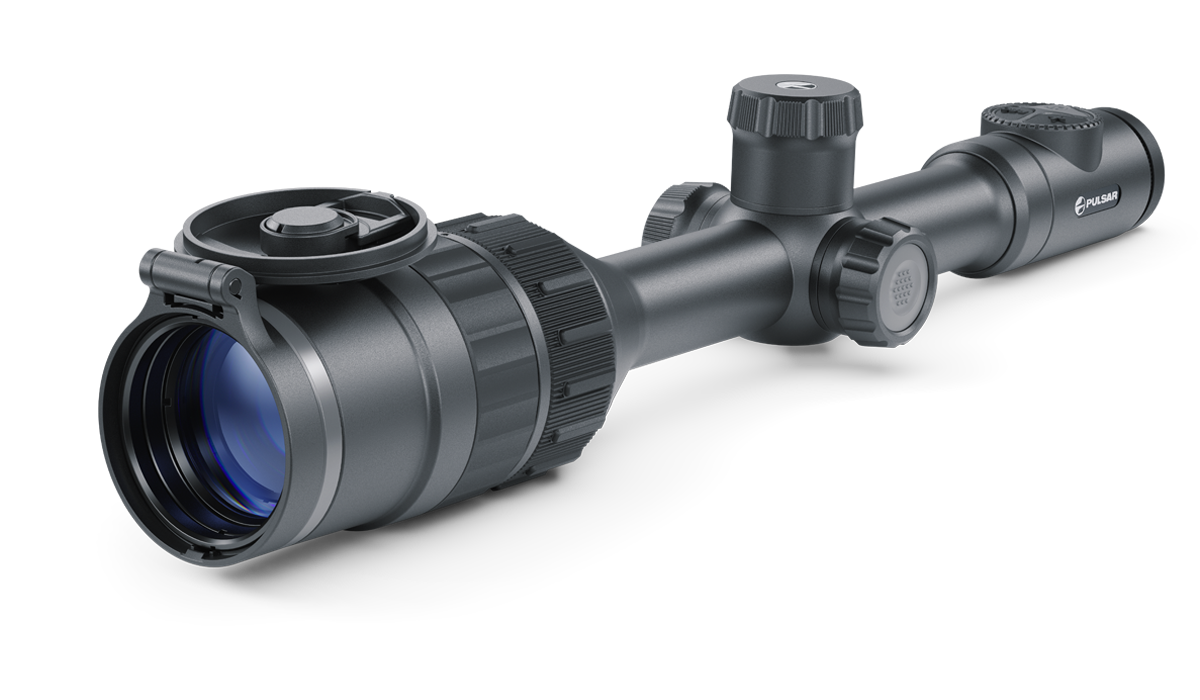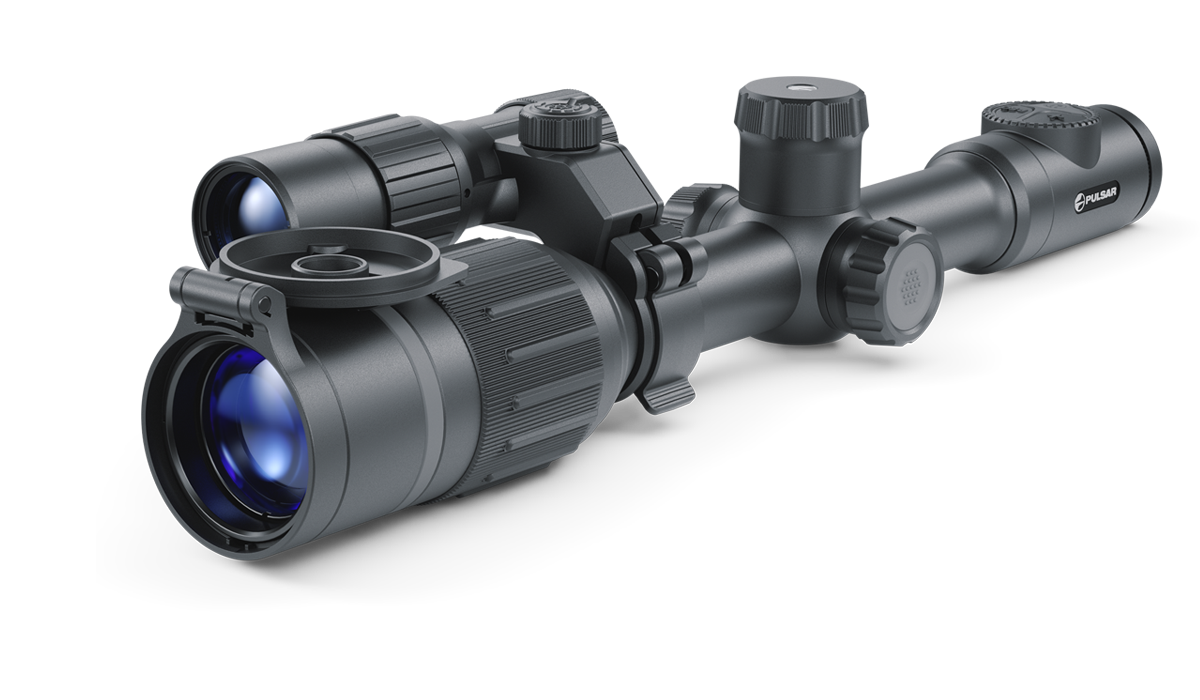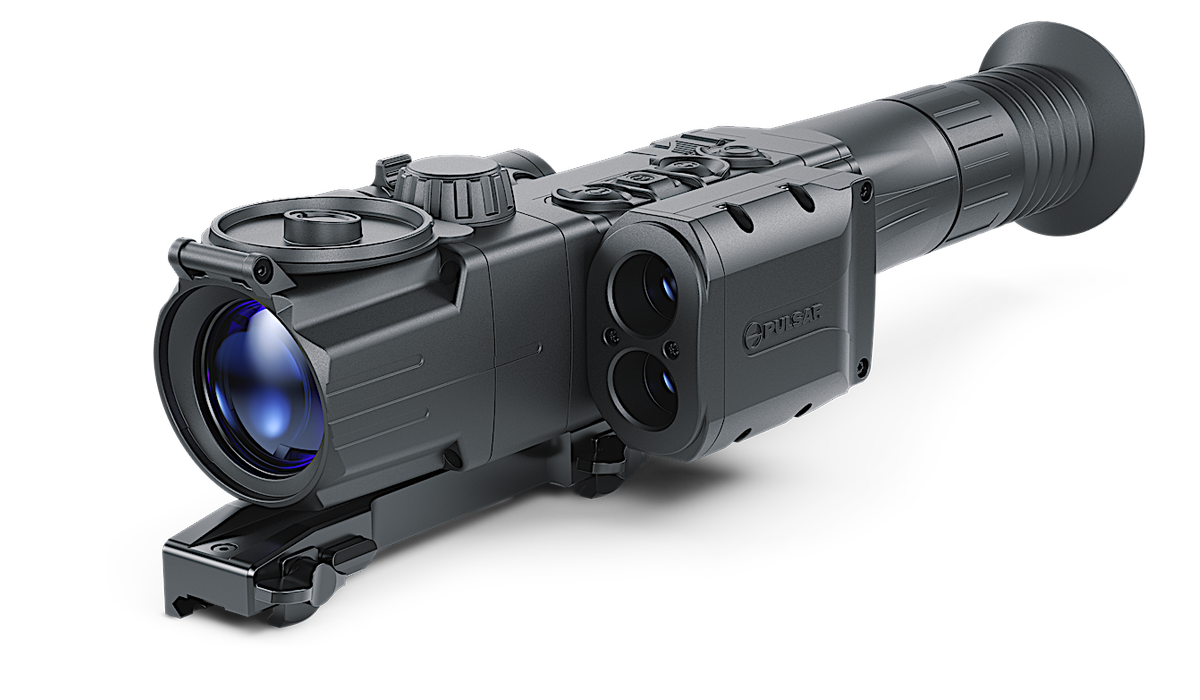Pulsar Night Vision Riflescopes
ANV Generation 3+ night vision goggles
Professional sales only
Why choose a night vision device?
Night vision devices form an image with light that is reflected off objects, which is the same way that our own eyes see the world. This is distinctly different to a thermal imaging optic that forms an image with radiated light (heat) in the long wavelength infrared spectrum (LWIR).
Read more
Because our eyes are used to seeing with reflected light, a night vision image is more natural and produces better object identification and spatial awareness (depth perception and movement etc).
Another fundamental characteristic of a night vision optic is its ability to amplify light. This depends on the technology and quality of the device. This is usually reflected in the price of the unit, but not always. We have seen devices from a variety of manufacturers that make claims that are unsupported in practice.
Night vision can see through glass, important for navigation and security applications and an image formed by reflected light produces an image that can be used for person identification and studying wildlife such as endangered species when individual animals are tracked and studied.
Pest controllers and hunters often use a thermal imager for spotting and a night vision riflescope for shooting because the target is easier to identify and grass and foliage can be seen in front of the target that may deflect the shot. A clear line-of-sight must be maintained for night vision to be effective.
Recreational users visit one of our stockists for a demonstration:
There are two types of night vision, digital and image intensifier tube.
Digital night vision
NIR optimised monochrome sensors
All digital sensors amplify light, though some do so more than others.
The best type of digital night vision uses a large format monochrome (black and white) sensor. This type of sensor is widely used for astronomy, defence and high-end security applications.
A monochrome sensor has pixels with a larger surface than a colour sensor, because the colour sensor has to split the light into red, green and blue to create a colour image.
Another advantage of using a monochrome sensor is the ability to choose a sensor that is optimised for the red to near-infrared (NIR) spectrum, approximately 600nm – 1200nm. This allows the device to work without the need to use an IR illuminator for around and hour after sunset / before dawn, when the earth is bathed in infrared light that is invisible to our eyes. Another advantage of a NIR sensor is its high sensitivity to an IR illuminator. Pulsar illuminators output a fraction of the infrared that is required for a non-NIR night vision device.
Pulsar night vision optics are fitted with NIR optimised monochrome sensors, as well as Pulsar’s propriety SumLight light amplification that enhances low light operation through adaptive frame rate.
Colour Day / Night sensors
A colour sensor must be optimised for the visible spectrum in order to produce an image that is natural and free of colour biases. These sensors are also sensitive to infrared up to around 940nm, though depending on the devices quality and configuration, may need a relatively bright IR illuminator to operate in total darkness.
Optics with colour sensors have an infrared cut-off filter that filters out infrared during daylight use. This filter is removed for night time use and the optic displays a monochrome image. However, this monochrome image is not the same as a true monochrome sensor, which is vastly more sensitive.
What determines the low light performance of a colour day / night optic is the size and quality of the sensor, as well as the optical characteristics of the device and its image processing capability.
The decision to purchase a monochrome or colour digital optic largely depends on the users requirements. A day / night optic favours daylight hunting with little night use, while a monochrome sensor is better for night use.
Finally, digital night vision can withstand bright light without damage and is more affordable than thermal. A thermal hand-held monocular and a night vision riflescope is a very effective combination for clear line-of-sight shooting.
Image Intensifier Tube night vision
Developed before and used in WW2, tubed night vision optics have been around for a while.
Consumer night vision includes generation 1, CF-Supertube and Generation 2+. Pulsar discontinued their Gen2+ range once that their digital optics reached parity in terms of performance. Our own comparative testing has confirmed this.
Generation 3 night vision
Gen 3 night vision is a huge improvement over previous Gen2+ models. However, Gen 3 is more Costley and is a dual-use controlled item.
Our ANV Gen3+ night vision in demand with professional users who require the very best lowlight performance.
The + in Gen3+ refers to high sensitivity thin-film, autogated tubes. Autogating was developed to prevent bright light blindness in battlefield conditions, caused by flares, explosions, lights and fires. Autogating is a huge advantage during boat navigation in and out of harbours.
Professional users
Two important advantages that night vision has over thermal imaging is the ability to see through glass and that the image is formed by reflected are important when navigating a boat, because objects that are the same temperature as their surroundings are difficult to see. Reflected light also better represents the surface of the object, or subject, which is important for facial recognition.
Read more
Advanced Optics offer the professional users a choice of technologies. Our generation 3 goggles can be used in occluded starlight, often without the need for additional IR illumination. These are ideal for navigating boats in areas where there may be floating debris, small vessels and other obstructions. We supply Gen3 goggles to Coastguard New Zealand who require performance and reliability.
Our Pulsar DNV have the ability to record and stream images via the internet. The device can also be controlled remotely via StreamVision when mounted to an accessory mount or tripod. DNV optics can be used in conditions far darker than the eye can see, and in extreme darkness, a 940nm ‘stealth’ illuminator enable the user to spot, observe and record video. Stealth illuminators have an extremely dull glow, that is invisable at distances of more than a few metres. This is essential for covert recording, to avoid the threat of intimidation or violence may be encountered.
Our DNV clients include Ministry for Primary Industry Fisheries Protection and the Department of Conservation for observing and monitoring endangered species.
We have demonstration models available for Government and volunteer clients to use for evaluation. all of our products are waterproof to IPx7, making them suitable for use in extreme weather conditions including submersion into a metre of water for up to 30 minutes
Contact us via our email form for more information.




